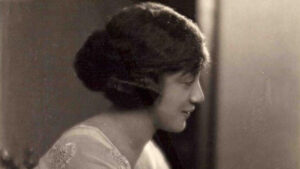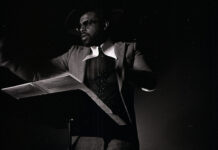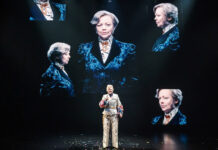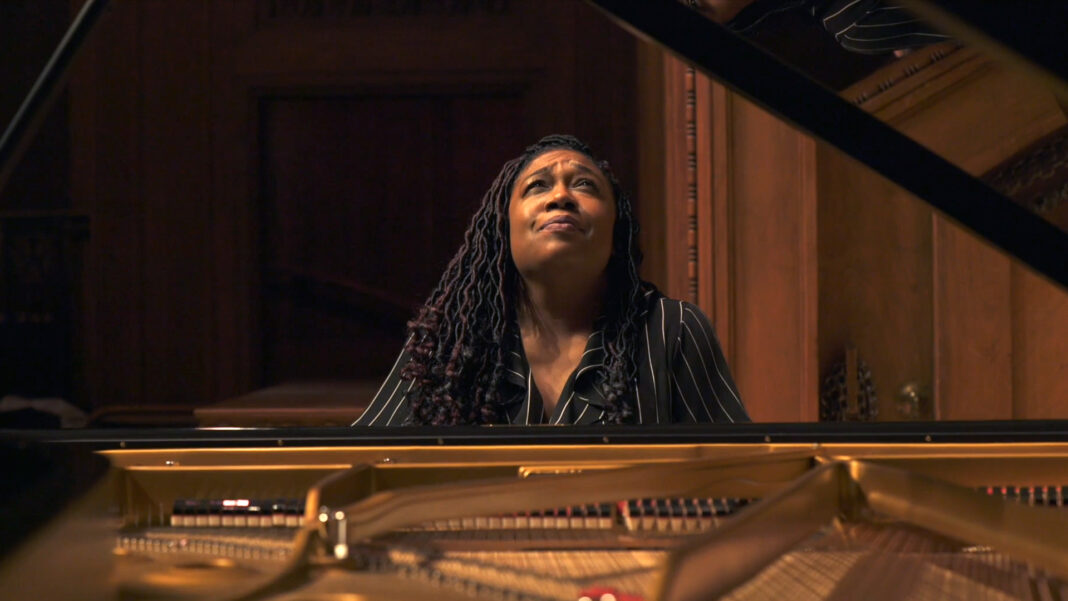
Pianist Michelle Cann didn’t necessarily know what she was going to find when she was approached in the spring of 2016 about playing Florence Price’s music. What she discovered, beyond a composition that excited her, was a composer who felt like a kindred spirit.
This weekend Cann is going to play several of Price’s works with the Los Angeles Philharmonic. The concerts are part of the Rock My Soul Festival.
Saturday and Sunday’s performances will celebrate the relationship between Price and another Black female composer of the era, Margaret Bonds.
Much of the music being performed is not part of the standard repertoire – even of works by these two women. Cann will be giving the world premiere performances of A Piece for Solo Piano and Orchestra after Florence Price’s “Fantasie négre No. 1.”
Last week I spoke with Cann about Price, other forgotten Black women composers and how Price has become her “soul sister.” What follows are excerpts from our conversation that have been edited for length and clarity.
Last October Classic FM published a list of the ten Black composers who changed the course of classical music history. Florence Price and Margaret Bonds were the only two women on that list. Given the discoveries that were made of their work, what are your thoughts or what is your awareness about other Black women who might have composed music whose works have remained relatively undiscovered or worse, lost forever?

That’s a really great question. I would say that it should encourage artists and musicians and scholars to ask those questions. If these two people, Florence Price and Margaret Bonds, could have had all these roadblocks, had all these different struggles to be appreciated, there has to be more.
I came across a number of composers that were either from or spent time in Chicago. That’s why their names came up. I was reading about the connections of Black artists, from musicians to poets to writers. There was a renaissance there in Chicago of these artists.
Betty Jackson King was a name that I came across that has this beautiful set of pieces, Four Seasonal Sketches. Another name I came across, Irene Britton Smith, was African-American and she also had some Native American blood in her. She knew Florence Price and was a huge fan, of course. She wrote her a letter and Price responded. She kept this letter her whole life because it was such a big deal to her.

This past year I came across the name Helen Hagan. She was the first Black woman to ever go to Yale [School of Music] and graduate from Yale. She went on to write this really great piano concerto, except that all we can find is the first movement. We can’t even find the rest. The one thing I will say that I found to be consistent across the board, from Florence Price to Helen Hagan, is all of them had the same kind of issue of not being fully appreciated during their time, especially when it came to publishing. More than half of their music is lost.
More than six years you got the call from The Dream Unfinished about Florence Price and her music. When you got to really sit down and look at the score for the Piano Concerto in One Movement, what stood out to you about her style of composing?
I think what was really amazing for me, and still is, was that I got a very strong sense and connection to American Black music and culture. Throughout every section of the concerto, since it’s one movement, there were constant folk melodies. The second solo section is like a spiritual, and the last movement is, which I found out later, was the Juba* dance. It just reminded me of ragtime from that first reading. There was this complete sense that she loved and really understood and connected with all these different Black American music musical styles.
The other thing I love about her and the uniqueness of her as a composer was that she also really did bring in her training – the European style of composing. The way she structured the concerto that it fit into a certain structure that you would expect in a piano concerto from other well-known European composers. She clearly loved the Romantic Era because even the beginning of the concerto was very rhapsodic. You could imagine Tchaikovsky, Brahms, Rachmaninoff, any big romantic composer writing in a certain way that she did in this concerto.

You’ve said in previous interviews about her music that you can hear folksongs, Saint-Saëns and now you mention these other composers. Folk songs have been a huge inspiration for classical composers for a long time. Where does her voice stand out above those references and those influences that you cited?
Just like any composer there is obviously going to be this connection to what you grew up hearing. What you were taught from a young age, even all the way through college. All of these things are influencing your style of writing, whether you like it or not. She grew up in the South. She knew these dances. She grew up religious and in the church; she knew spirituals very well. All of these things were the backdrop of her life.
Meanwhile she was classically trained. She was a pianist. She played all of the standard literature and studied composition. So you see that side of her life. I find it very interesting when I see somebody who can literally just take every aspect of their life and the influences of their life and somehow make that into their own unique musical style. That to me is what stands out.
You’re going to be giving the world premiere of A Piece for Solo Piano and Orchestra after Florence Price’s Fantasie négre No. 1. Price was very much inspired by the spiritual Please Don’t Let This Harvest Pass. How does this new work by Michael-Thomas Foumai honor Price’s work and the spiritual that inspired her?
He doesn’t really change the music. What I appreciate is that Michael in no way set out to change her vision.
Generally speaking she did a lot of original things. In this particular Fantasie she takes a well-known spiritual. She clearly knew this and she knew it as a spiritual. It’s an amazing set of variations on this spiritual theme and brings it to life as one of her most significant piano works. The Fantasie is the longest and the most developed.
Now Michael is just continuing in that kind of progression, taking something that existed before Florence Price and that existed within Florence Price’s vision for a piano. He’s expanding that even more to be realized now by the orchestra. Which is exciting because, of course, the orchestra is going to be able to afford even more colors and more variety to what Florence Price was able to put on the piano with these variations.
How will performing this newly expanded work be different for you as a pianist?
The only thing that I find tricky is not playing. That’s the part I’ve had a hard time with because I’ve played it so much as a piano solo. I play everything and he gave parts to the orchestra. So even though he doesn’t change the music, he slightly changes when I play. It’ll be very interesting. I’m very excited. But I’m also so curious about how this is all going to feel when we put it together in rehearsal.
Renowned opera and gospel singer Marian Anderson, who sang Florence Price’s music, said, “It is my honest belief that to contribute to the betterment of something, one can do it best in the medium through which one expresses oneself most easily.” How does playing Florence Price’s music allow you to express yourself most easily?
From the very first introduction to her music with the piano concerto I just fell in love with her writing style. I felt that it fit me.

I lived in a small town in Florida. I grew up in the church. I played in the church, sang in the church and knew all these spirituals. At the same time I had friends that were not classical musicians. So part of my life very much involved popular music. My dad is a music teacher and I played the steel drums and I played Caribbean and Latin music. Then I would go to my piano lesson to work on Beethoven and then go do a Mozart concerto for a competition. Then the next day go play calypso music with the steel drum band. So I literally grew up participating in music in all its forms.
I really love so many different styles, but I always felt like they had to be separate because that’s what it was.
We spent too long putting music into different boxes and saying, this music is for you. None other than African-Americans, more than anybody else, still to this day are pigeonholed into a certain type of music being, quote unquote, our music. I had to live feeling like I had to separate the sides of me instead of just embracing it all because it’s all really great. Music is something for us all to share, no matter what it is.
All that to say that Florence Price was an inspiration to me because she wasn’t afraid to do that. She would not let you put her in a box. She did not just write music of Black American people. She also didn’t just sit there and pander to the Romantic era and make everything just sound like Romantic era music that will sell. She wasn’t writing music based on what she thought would sell. She wrote what was part of her and inside of her. Her music is her soul.
I can’t find any other composer that spoke to me in such a very real and visceral way than Florence Price. Of all composers that I’ve come across, she’s like my soul sister, as some people would say. I feel that way when it comes to her and her music.
*A juba dance is an African style of dance that features slapping, stomping and patting arms, legs and other parts of one’s body. It is also referred to as “hambone.”
Main Photo: Michelle Cann (Courtesy Curtis Institute of Music)










